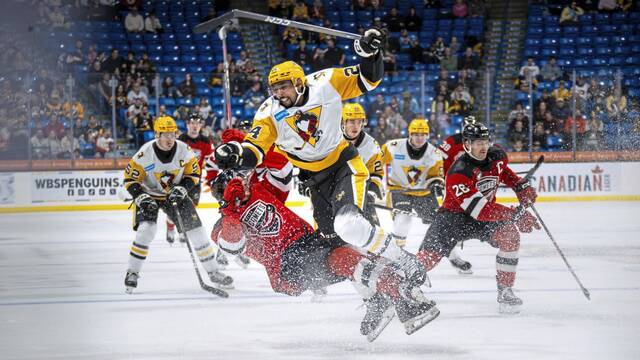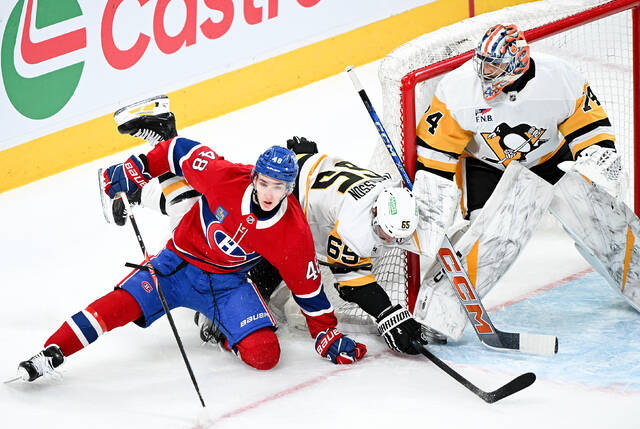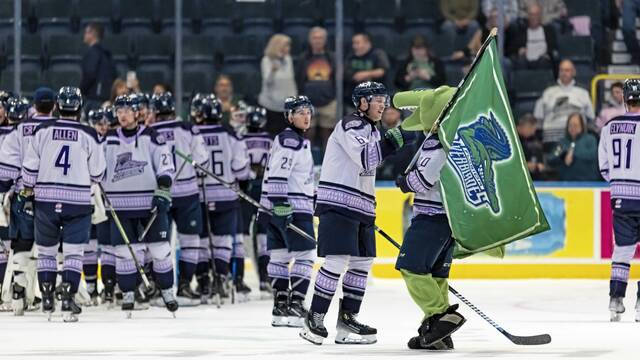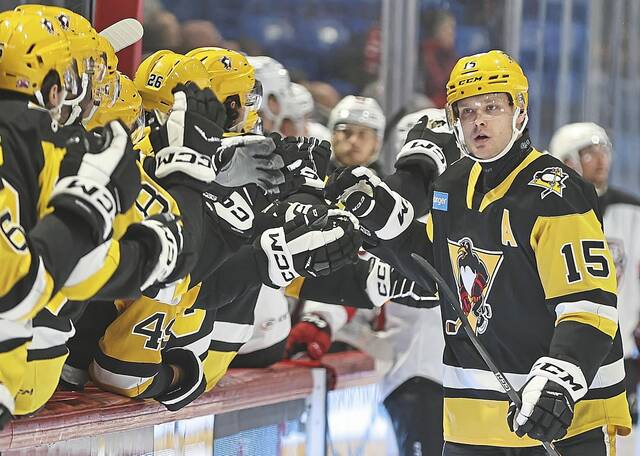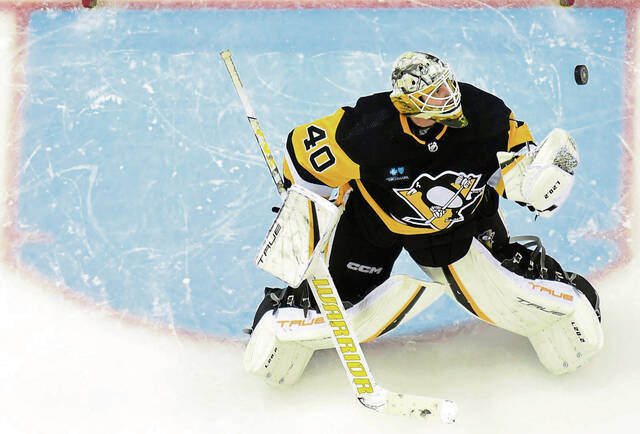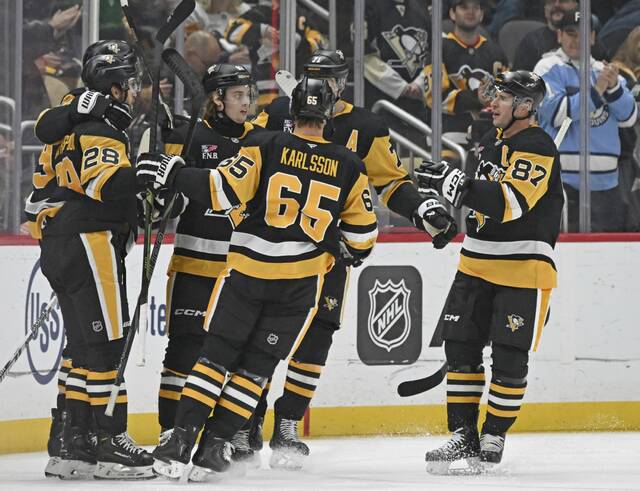With Marcus Pettersson’s overtime winning goal lifting his club over the visiting Montreal Canadiens on Jan. 27, the postgame mood at PPG Paints Arena heading into the All-Star break was undoubtedly positive for the Pittsburgh Penguins.
The night before, the Penguins (22-17-7) lost in a shootout to the Florida Panthers but had managed to tie the score in the final minute of regulation, forcing an overtime period and earning a point.
As Pettersson said after the win against Montreal, “It brings some juice and positivity into the break. It’s a real battle out there in the whole East(ern Conference). … Huge two points.”
Gaining three of four total points in their last two games ahead of the All-Star break was big for the Penguins, who continue to fight for dear life in the Eastern Conference playoffs race with a particular eye on the two wild-card positions.
At the break, the Penguins are tied for fifth in the Metropolitan Division and seven points removed from the second wild card, currently held by the Detroit Red Wings.
The Penguins have used the break to rest and refresh before preparing to strengthen their position in the standings beginning Tuesday at home against Winnipeg.
A critical factor will be improving the power play, which ranks second-to-last in the NHL with a 13.1% conversion rate.
From coach Mike Sullivan’s office, to the Penguins locker room, to the virtual town squares of social media, debate and dialogue has abounded as to how the team’s 31st-ranked power play can start performing respectably.
So far, neither Sullivan nor any armchair experts on X have been able to crack the code.
A clip in mid-December featured back-to-back games with two power-play goals, and the Penguins produced four straight games from Jan. 2-8 with a goal on the man-advantage (out of 17 opportunities).
But aside from that, the club’s power play has been largely impotent.
If the Penguins’ most recent two games were any indicator, Sullivan has appeared more willing of late to shuffle the deck in terms of personnel groups.
Versus Florida, the power play quickly struck, with Jake Guentzel scoring less than two minutes into the game.
But from there, the Penguins were frustratingly unable to find the back of the net on seven ensuing power-play opportunities.
To begin the Penguins’ final power-play try of the night late in regulation, Sullivan swapped out Erik Karlsson and Evgeni Malkin on the top unit, inserting Valtteri Puustinen and Kris Letang.
The switch did not bear fruit, although Sullivan opted to keep Puustinen and Letang with Sidney Crosby, Jake Guentzel and Bryan Rust together Saturday against the Canadiens, while Malkin, Karlsson, Lars Eller, Jeff Carter and Rickard Rakell rounded out the second group.
That night, the power play was 0 for 2.
“As far as where it goes moving forward, we’re going to have to make decisions accordingly,” Sullivan said. “We made the decision to split the groups for obvious reasons, and we like to believe that if we put the group of guys on the ice that we’ve had on the ice for quite a long time now, that we’d find a way to gain some traction. We just haven’t seemed to be able to do it.”
Puustinen was reassigned to Wilkes-Barre/Scranton last Sunday, creating an open spot on the newest incarnation of the top power-play unit.
Regardless of how Sullivan decides to proceed after the break, the Penguins’ power play this season has been a liability as opposed to a projected source of strength.
Graphic
To date, the Penguins have lost a combined 12 games in regulation and overtime by one goal.
In eight of those contests, the power play failed to record a goal. Overall, in 50 tries, it converted only five times (10%).
Per Penguins historian Bob Grove, if the season ended today, the Penguins’ power-play percentage of 13.4% would qualify as the franchise’s worst, surpassing in ineffectiveness that of the 1967-68 club’s 13.6%.
At 13.3%, at the moment, the Pens’ PP is worst in team history. The team record for worst conversion rate in one season is 13.6% in 1967-68.
— Bob Grove (@bobgrove91) January 26, 2024
Last year, it finished 14th in the league at 21.7%.
Suffice it to say fixing the Penguins’ feeble power play into something that can help win — as opposed to lose — games will be a major priority once the team resumes organized activities Sunday in Cranberry.
“Nothing’s etched in stone,” Sullivan said. “We’ll see where this thing goes moving forward. All of these options are on the table and will continue to be on the table. We’re just trying to find groups that are going to bring us some success.”



